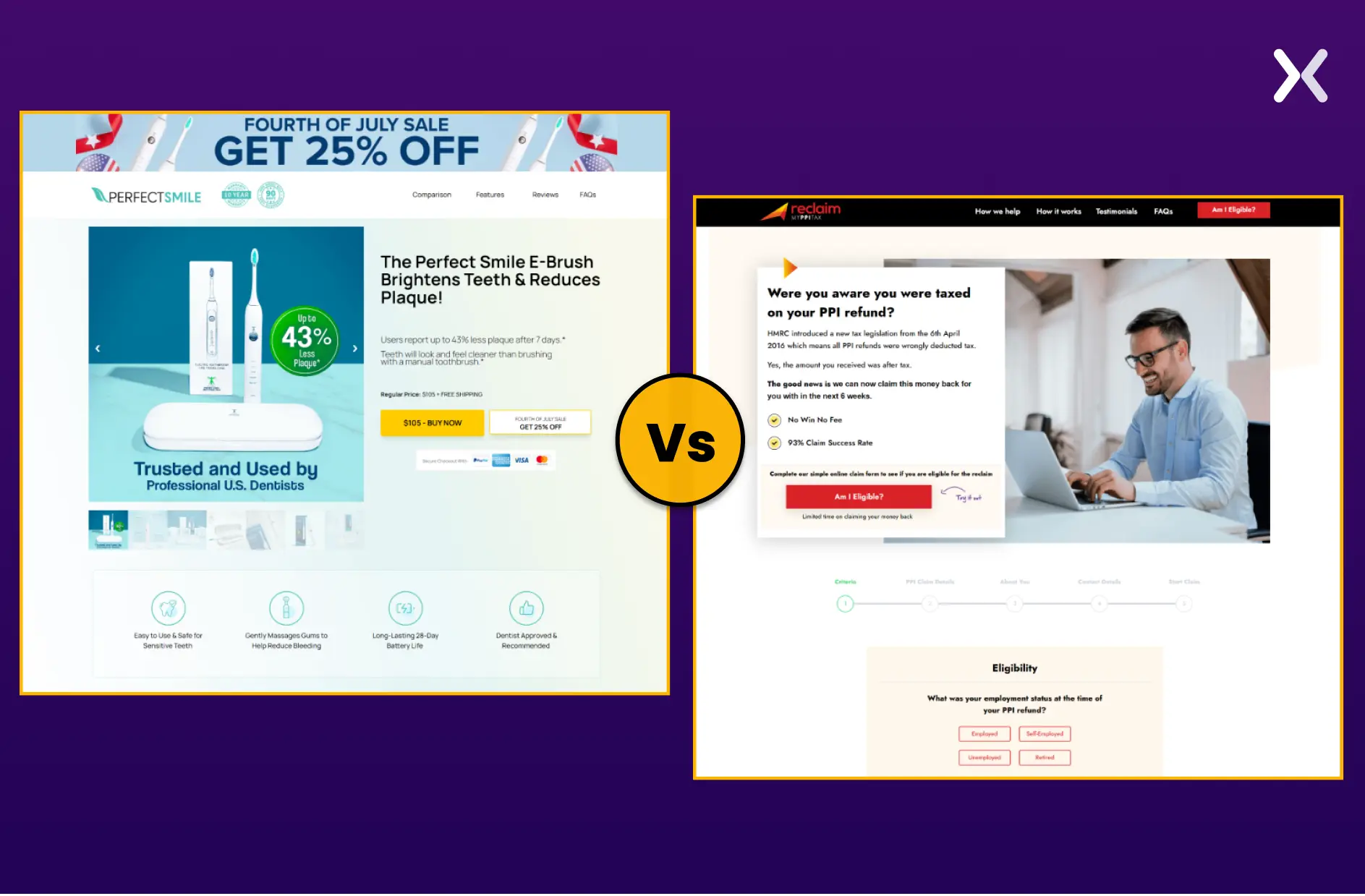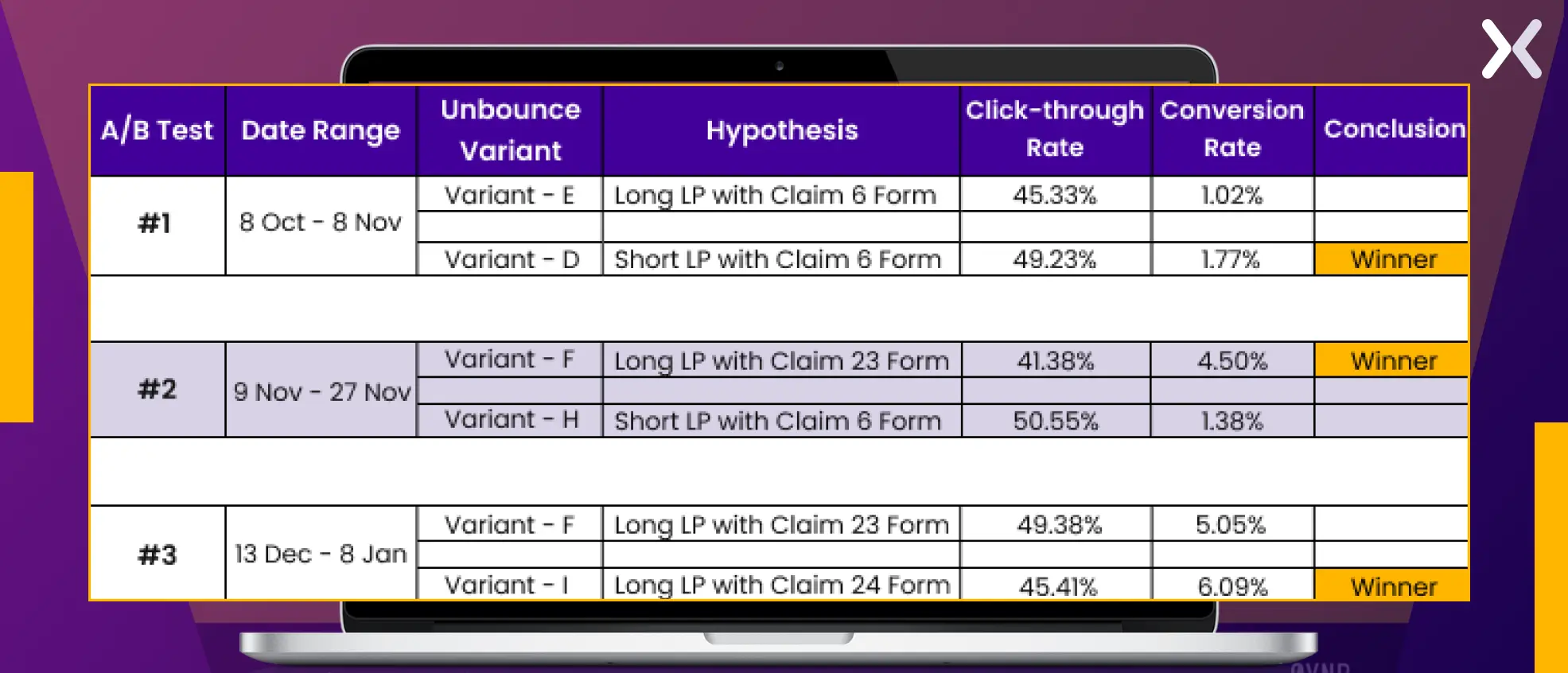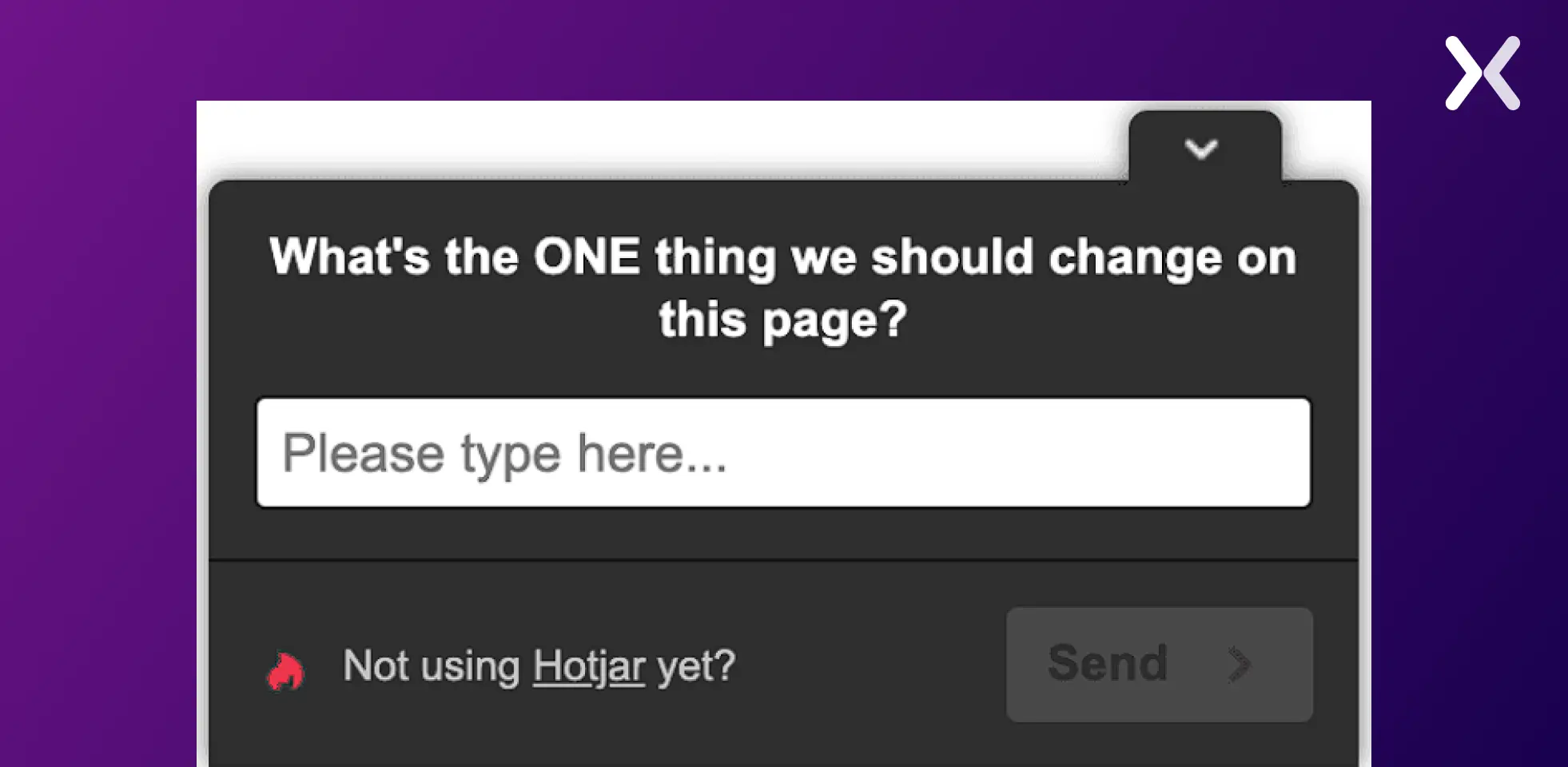A landing page conversion rate optimization strategy in place helps you deal with high bounce rates in a practical way. Because getting a visitor to click on an ad is not enough, your post-click experience must make an impact.
Landing page CRO ensures that your user flow and CTA are optimized to deliver meaningful engagements to the visitors. By combining qualitative and quantitative data, a CRO strategy strengthens your decision-making and landing pages.
Wondering what the right landing page CRO Strategy is?
Don’t worry, you have got our back.

Landing Page conversion rate optimization is considered an effective process for increasing the percentage of visitors who convert on the landing page. Conversion rate optimization (CRO) is used for websites, landing pages, microsites, emails, etc., to ensure that they deliver great user experiences and boost conversions.
For example, if you have a 10% conversion rate, it depicts that 10% of viewers got converted.
CRO performed specifically for landing pages is known as landing page optimization (LPO).
This process focuses on two things-
Evading the friction in the funnel
Upgrading the value of the specific offer
The conversion rate can be calculated by dividing the number of conversions by the total visitors and multiplying it by 100.

You can use GA4 to gather the data and calculate your conversion rates.

But, before calculating your conversion rate, ensure that you define your ‘conversion.’ For example, your conversion can be a subscription someone purchases when visiting your landing page or just downloading a lead magnet. Here, you will consider the subscriptions as your number of conversions and divide it by the total number of visitors.
Cracking a landing page CRO strategy is not an easy task. It’s not about choosing the right colors or size of the CTA button. This strategy holds a more important place in your overall marketing plan. Let’s explore some of the significant things you should remember:
Phase zero is for marketers and small businesses looking forward to a landing page campaign launch soon and want to ensure they make the most of it.
You can find many successful landing page CRO case studies on the internet. Though you can take inspiration from them, they might not truly align with your brand and marketing goals.

So, before building a full-fledged CRO strategy, it’s pertinent to identify what your target audience wants. Your landing page optimization should align with your business goals and buyer personas, be it for free trial, demo booking, newsletter sign-ups, etc.
For example, let’s compare two B2C landing pages:

Despite being from the same business vertical, the above landing pages target different audiences, which is clearly visible through their landing page elements. Such clarity helps execute amazing landing page CRO strategies.
The method for the above sadly doesn’t exist. But you can start early with your landing page CRO and ensure that you’re in tune with the wants and needs of your target prospects from the first click to your page.

For this, you need all the right tools and methods set up in your landing page funnel to execute a landing page CRO strategy easily, which we will discuss in the coming phases.
We sometimes get carried away with our landing page designs’ amazingness, but the truth can be too far from it. Here, trusting the data is crucial. Instead of relying on gut feeling about whether the landing page should be long or short, A/B testing the idea is a better idea.
The landing page for Reclaim My PPI Tax, which we saw earlier, was not finalized on the first attempt. It took CRO methods and testing to understand that the form should be multi-step and placed right after the first scroll. It also involved meticulously collecting and analyzing the right data, which helped the landing page secure a final conversion rate of 6%.


This phase will discuss three crucial pillars that help develop practical landing page CRO strategies.
Understanding your visitors’ activities is essential before identifying anything. Track the performance of your landing page’s other metrics, not just conversions.
For how long are users on the page? How many people partially filled out the form? Where is the traffic coming from? All of these questions are critical to optimizing your PPC landing page and its budget.
Here are some landing page KPIs you should keep in mind: bounce rate, incoming traffic sources, page speed, etc. You can quickly check all of this via Google Analytics and other tools.

Quantitative data helps you understand general visitor sentiment for your landing pages. Though it doesn’t point out any specific element to be fixed, it captures many visitors’ data into a simple numerical format that you can easily benchmark for optimization and future campaigns.
It’s essential to track visitors when they visit the website. It helps to identify if any page elements are not letting them proceed with their search, etc.
You can analyze visitor behavior through heatmaps, session recordings, interview feedback, customer surveys, and net promoter scores.

Qualitative and quantitative hold equal importance while deep-diving into the analytics and identifying the right CRO Strategy. Here are the key differences between them:


Two pertinent elements help contemplate customer psychology:
At the end of the day, your visitors are looking for something that can make them a perfect part of this society. The human brain runs according to market demand. To build a CRO Strategy, it’s crucial to understand human psychology and Robert Cialdini’s six principles of persuasion.

Reciprocity: Sharing valuable information through videos, images, and interactive tools like quote calculators increases the likelihood of visitors doing business with you.
Scarcity: Ensure to highlight limited offers and discounts on your landing page to highlight scarcity.
Authority: Share about your team and the talent pool you have. This will increase the credibility of your products and services.
Consistency: Build the whole start of your landing page funnel with small conversions, then follow up with larger requests.
Liking: Build rapport with your audience by sharing personal stories and showcasing the humans behind the brand.
Consensus: Leverage social proof throughout your landing pages in testimonials, trust badges, videos, etc. formats.

“At Apexure, we use multi-step forms to gently nudge users into completing them without feeling overwhelmed. We start with a simple question, leveraging the "foot-in-the-door" technique. This makes it easy for users to interact with the form, increasing the likelihood of continuing to the end.”
Understanding customer behavior and identifying how they recognize an ad or information on their screen is essential. For example, millennials prefer to read information via a post with minimal designs instead of reading things in detail. These things can help you improve your CRO Strategy.
How can we understand the behavior of the target audience?
Customer behavior can be understood by analyzing how previous leads turned into customers.
By following their buying cycle, we can learn a lot about the various ways in which a user can convert. Many tools on the market help us understand user behaviors in real time, making things easier.

“My favorite psychology trick is using the sense of ownership. Instead of saying, "Subscribe now to get a whitepaper," we say, "Secure your whitepaper now." Instead of "help reforest the planet," we say, "Plant your trees now." It makes people feel involved already, as if it were "their" whitepaper and "their" trees. It makes a massive difference in CRO! Because, of course, once it's mine, I want to keep it, right?”
Having the right tools in place can help you feel confident in executing your landing page CRO strategy. There are many tools for landing page analysis, so you need to assemble your landing page CRO tools according to what best serves your marketing goals.
Google Analytics helps record data consistently. For example, you can identify every page view, bounce rate, engagement rate, total pages visited, demographics, etc. This is basically the tool from which you can assemble quantitative data.

All of this data can help you identify several things and help you build an effective CRO strategy-
Can you direct me to where you should run more ads- Blogs/Social Media, etc?
Can you help identify landing pages that lead to the highest drop-off rates?
Identify the demographic structure of your website.
Determine the products that lead to the highest conversion rate.
Google Analytics can help you identify numbers. However, with UX optimization tools, you can identify the reasons behind those numbers. In short, such tools give context to what Google Analytics offers and answer behavioral questions about visitors.
It can help you identify:
Where does a visitor get stuck, and why is s/he struggling before dropping off
How does a visitor interact with certain page elements
What do they like the most and least on the landing page?
All UX optimization tools come with certain features that are useful for collecting qualitative data.
Heatmaps showcase how people interact with your landing pages by highlighting ‘hot’ and ‘cold’ engaging spots. By color-coding, they make it easier to identify the page sections that caught visitors’ attention the most.

Session recordings feature videos of how users interact with your page in real-time. They help you reconstruct the users’ journey throughout the landing page. One can observe how the user moves around, what they prefer to click on, and what they like to ignore. This helps in designing a better landing page format overall.

Such tools are filled with different surveying methods so that you can share the option of providing feedback to visitors. It will help you identify what they think about the products/brand or page experience.

The above are just some of the traits that UX optimization tools deliver, but there are many more to uncover. Hotjar, Crazy Egg, and Kissmetrics are some of the UX optimization tools worth checking out.
Gathering data is not enough; you must also analyze it correctly. Phase three will discuss some ways to approach this.
Instead of considering analytics and heatmaps as opposites, identify them as complementary analytics tools to build a CRO Strategy.
Here are four combined uses of these tools:
You can quickly improve the conversion rate with the help of these two.
Identify the difference between before and after a website redesign.
It can help improve customer experience
It can help change your business into a successful digital one.

This data is ideal for analyzing and improving loopholes. Remember to give equal priority to quantitative and qualitative data. Combining both kinds of data can help you build an effective CRO Strategy.
It is crucial to build a solid hypothesis before testing. You can build various hypotheses for testing different landing page elements based on the quantitative and qualitative data.
It is time to test pages. There are three types of landing page CRO tests: A/B testing, split testing, and multivariate testing.

Wondering which one you should choose? Here are some points to help you out. All three types have different uses. Hence, it’s essential to first identify what you are looking for.
A/B Testing is mainly used when design changes aren’t complicated.
Split testing can be used when the design requires more modifications than the original version. This is crucial when making back-end changes, such as testing thepricing section is required.
Multivariate testing is used when multiple changes are suggested on the same page, and one wants to test every combination separately.
This stage is considered the final stage for your testing. It will help you close the loop for conversion rate optimization and build notes for the new information acquired for further testing.
Dig deep and identify what can be improved instead of only testing and deducing the test as pass or fail. Also, ensure that the final results might vary due to your experimenting platform. Some of the popular A/B testing platforms are Optimizely and Visual Website Optimizer.

“To make landing page testing more reliable, we consider both traffic and time, changing only one variable at a time. For small traffic volumes, we conduct split tests with completely different page versions. We also use Unbounce's confidence indicator, which employs a Chi-Square test to measure the likelihood that the winning variation's higher conversions are not due to chance. A higher confidence level enhances our decision-making confidence.”
If you want to make A/B testing easier, try Instapage’s advanced A/B Testing analytics. This one will help you quickly curate the variations with a fully customizable builder.
After listing all the observations from qualitative and quantitative data and forming hypotheses, you might wonder which landing page experiment to execute first.
To overcome this, Apexure utilizes a home-built system called the EPIC CRO Framework. It weighs in time, impact, and risk involved in testing a hypothesis to prioritize which tests will give a high return with less effort and time.
This framework ensures that we concentrate on the most relevant hypotheses at the appropriate stages, allowing us to accelerate progress and optimize the landing page more effectively.
Here are some CRO tactics that you can test on your landing pages:
Firstly, let’s shine a light on announcement bars. Those bars at the top of your site aren’t just for show. Use them to shout about your successes or share a hot deal. Something like, “Join 10,000 satisfied customers!” really grabs attention and can push visitors to act.

Next is the kicker text. It’s the small line before your main headline. Make it punchy to draw in your reader. Think of it as the headline before the headline that can make someone stop and think, “I want to know more.”

Now, let’s talk numbers. Show how many customers have bought your product or signed up for your service. It’s a nudge for new visitors, saying, “All these people can’t be wrong!” Make those numbers big, bold, and impossible to ignore.

On to the CTA, or the ‘Call To Action’ button. For those on phones, you want this button within easy thumb reach. If it’s easy to click, you’re upping the chances of getting that click. Simple but super effective.

Here’s a simple, effective tactic: Highlight the benefits. Tell people straight up why your product or service is their best bet. If you offer a guarantee, flaunt it right beside your CTA. It’s reassurance that they’re making the right choice by choosing you.

With the correct landing page conversion rate optimization strategy, one can quickly transform an average marketing funnel into an exceptional one. Unique CRO Techniques can convince a user to explore more, eventually increasing the conversion rate.
With the right framework and strategy in place, landing page CRO becomes much easier to implement and execute, increasing your chances of achieving your marketing growth goals.
Apexure has over 100 blog posts on landing pages. From creation to testing, analysis to optimization, we have shared everything. Check it out before building your landing page.
Optimizing a landing page on your own can be time taking. Get the help you need from our experts. Book a call, and one of our landing page experts will contact you soon.
Check out our landing page portfolio to discover conversion-friendly landing page elements that might be missing from your campaigns.
CRO landing pages are tested and designed to convert visitors into leads or customers. They focus on quantitative and qualitative data collected with tools.

Related Articles:
Drive More Sales or Leads With Conversion Focused Websites and Landing Pages
Get Started
In today’s fast-paced digital world, having a responsive website is no longer just a nice-to-have, it’s essential. Whether...
As artificial intelligence continues to evolve, businesses are finding innovative ways to enhance their marketing efforts. One of...
Get quality posts covering insights into Conversion Rate Optimisation, Landing Pages and great design